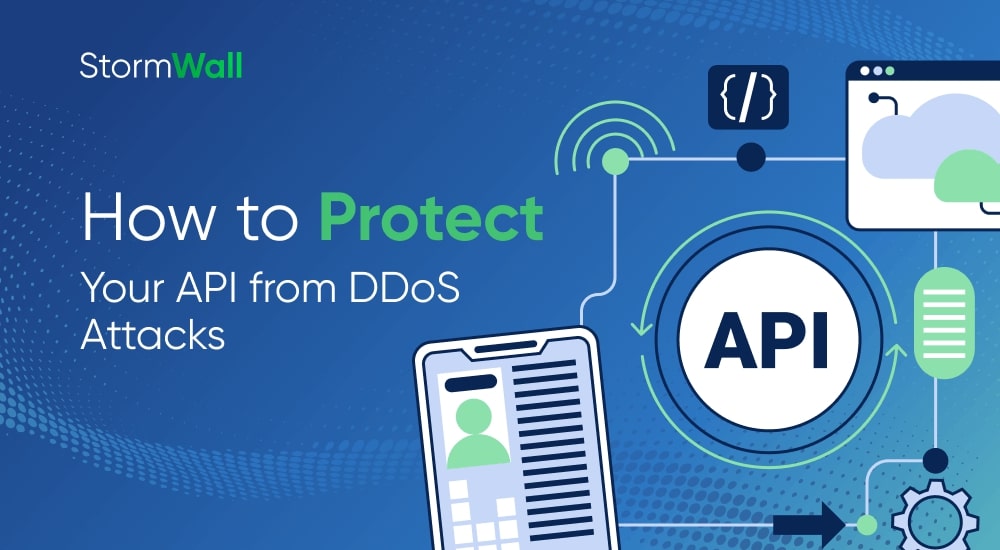The number of DDoS attacks targeting APIs is growing every year. Why are hackers focusing more and more on APIs? And how can you protect yourself? Find the answers in this article.

What Is an API?
To put it simply, an API (Application Programming Interface) is a set of rules, protocols, and tools that allow different software systems to communicate with each other. Think of it as a ‘bridge’ between applications—allowing one program to request data or functionality from another without needing to understand its internal workings.
We rely on APIs every day without even realizing it. For example, a weather app uses an API to request data from a meteorological service, while food delivery apps use APIs to connect with Google Maps or payment systems.
How does an API work? Let’s break it down:
- Application #1 sends a request to the API server of Application #2.
- The server receives the request, checks the incoming data, and processes it.
- If the request is valid, the API server processes it and returns the requested data, typically in JSON or XML format.
In most cases, APIs are essential for integrating services and saving developers time. There’s no need to build everything from scratch—developers can simply connect to ready-made solutions.
For many companies, another major benefit is that APIs help limit access to internal data. External apps and users only see what the API is designed to expose.
By controlling access to internal data, APIs add a layer of security for businesses. So how did they become a prime target for DDoS attacks?
Why Are Hackers Targeting APIs?
APIs can contain vulnerabilities—for many reasons, ranging from coding errors to the lack of proper API management within a company. Hackers often exploit these weak points to gain access to internal systems, customer data, and other sensitive information.
But when it comes to DDoS attacks, the stakes are even higher. A successful API attack can cripple an entire ecosystem of interconnected services. The consequences can vary—from data loss to broken functionality, or even a complete system outage.
In other words, a single, targeted attack can snowball into a massive issue affecting hundreds of thousands of applications and their owners. And the worst part? Hackers don’t need a huge amount of resources. It’s often enough to overload a specific endpoint or exploit a single vulnerability in the API.
API-targeted DDoS attacks don’t require massive traffic volumes to be effective. By targeting specific endpoints or exploiting weaknesses within the API, attackers can cause disruptions with minimal resources. This can lead to performance degradation and affect the entire network of connected services, potentially paralyzing systems without relying on traditional DDoS tactics like botnets.
API Protection Requires a New Approach
Attackers aim to disguise targeted attacks as legitimate traffic—and in many cases, they succeed. That’s what makes filtering malicious traffic in these scenarios much more difficult than dealing with HTTP floods or other, more familiar types of DDoS attacks.
Traditional security measures like Web Application Firewalls (WAFs) or rate limiting are increasingly ineffective when used on their own.
We recommend adopting a multi-layered security strategy to effectively protect your APIs. This approach can include:
- A positive security model—where protection systems block everything by default and allow only clearly legitimate traffic, preventing most types of attacks.
- AI-powered analysis and machine learning—modern technologies that excel at detecting and filtering out automated behavior disguised as legitimate user traffic.
API protection requires a thorough approach with a combination of security measures. Only this way can you ensure maximum security for your company. For now, we recommend starting with the most obvious step—assess your API’s security posture to see how well they are currently protected.

DDoS Protection for Websites
- Activate protection in 10 minutes
- 24/7 technical support




















